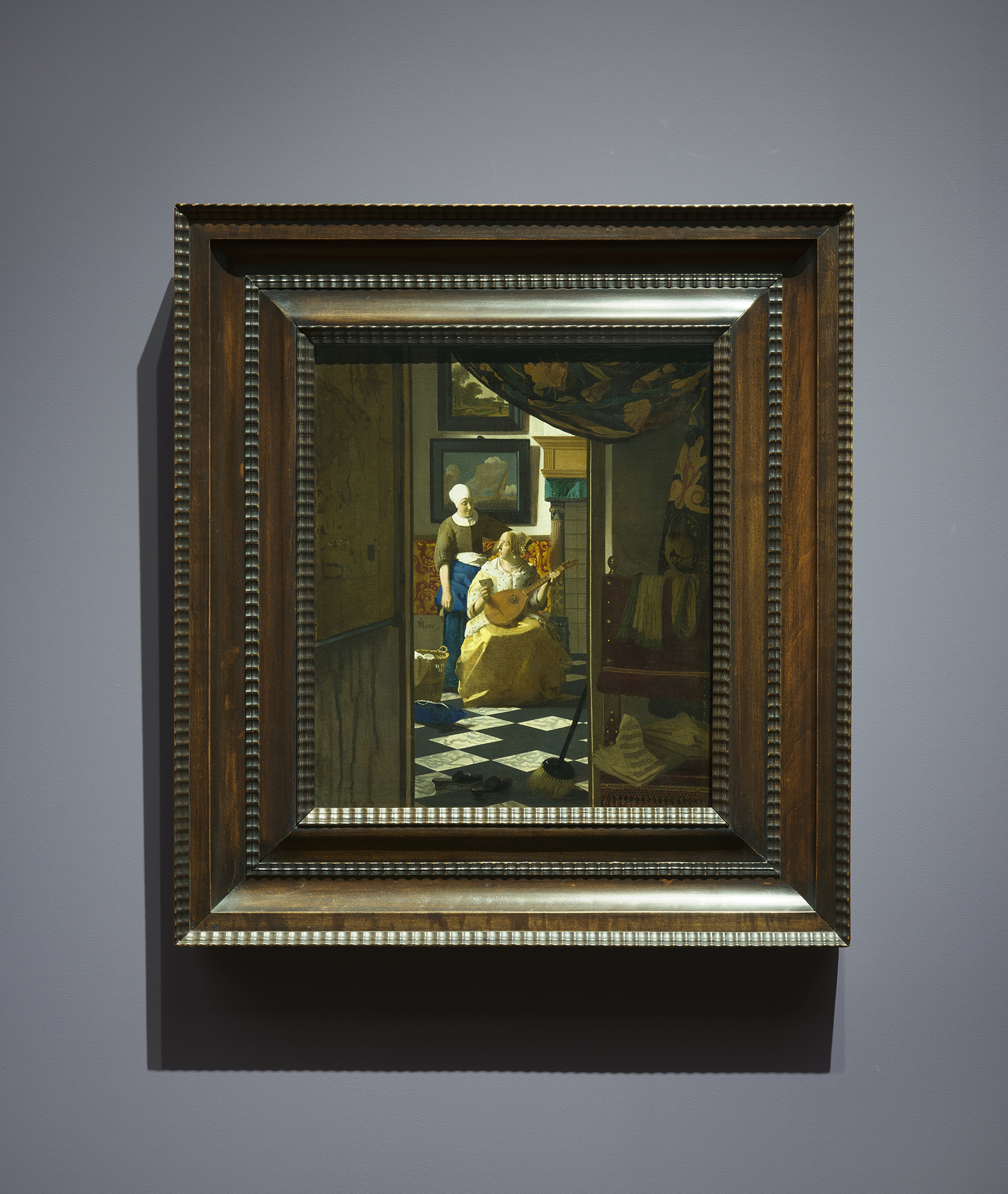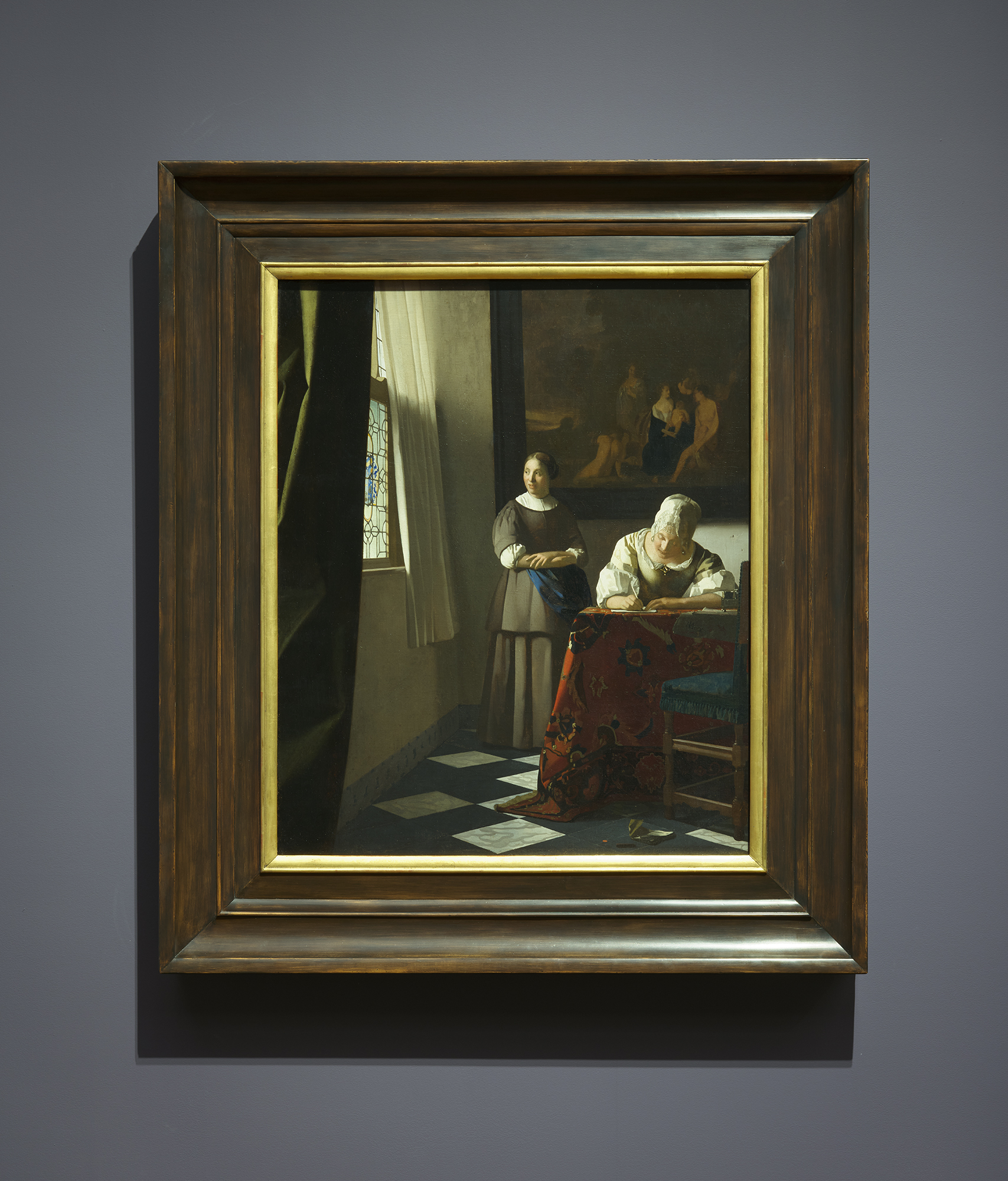They are only three, yet they fill the room. Silent, luminous, magnetic. Mistress and Maid from the Frick Collection, The Love Letter from the Rijksmuseum, and Woman Writing a Letter with Her Maid from the National Gallery of Ireland—three masterpieces by Johannes Vermeer (1632–1675) brought together for the first time in the exhibition Vermeer’s Love Letters, on view at the newly reopened Frick Collection in New York through August 31. A small and poetic show, already poised to win over a vast public.

This marks the first exhibition mounted after a five-year renovation (at a cost of $220 million), and it’s hard to imagine a more refined reopening. Vermeer is now one of the most beloved and recognizable artists, but his fame is a recent phenomenon. Forgotten for over two centuries, his iconic Girl with a Pearl Earring was sold at auction in 1881 for just two guilders.
Vermeer’s output is limited and precious. Only 37 paintings are confidently attributed to him, six of which revolve around the theme of the letter. In three of them, a maid appears—a presence that introduces a new narrative and relational dynamic to painting of the time. It’s no longer just about the solitary woman and her inner life, but a relationship, an exchange, an emotional tension that pulses through glances and silence.
In Mistress and Maid (1666–67), purchased by Henry Clay Frick shortly before his death, the lady lifts her gaze from the letter with an intense expression. Her fingers graze her chin, her mouth slightly open. The maid hands her a sheet of paper, perhaps whispering something—her lips too are slightly parted.
In The Love Letter, painted a few years later, the lady is interrupted while playing the cittern: her gaze is troubled, while the maid smiles knowingly. The canvas is smaller, the brushstrokes more decisive.

(Beit Collection)
Photo: Joseph Coscia Jr.
Finally, in Woman Writing a Letter with Her Maid, the tension becomes interior. The maid, no longer part of the exchange, waits silently as the mistress writes, absorbed in her thoughts.
These works reveal more than they show. The epistolary theme, popular in the Netherlands between 1650 and 1670, reflects a surprisingly literate society. The Dutch Republic was prosperous, print-rich, and book-loving—where even maids could often read, and sometimes write. A striking modernity that lives on in Vermeer’s poetic vision.
Love Letters is the first Vermeer-focused exhibition in New York since 2001. In addition to the three showcased paintings, the Frick also houses Officer and Laughing Girl and Girl Interrupted at Her Music, while five more Vermeers are on view at the nearby Metropolitan Museum, offering visitors an immersive journey through the painter’s delicate and timeless world.
Vermeer gently reveals the intimacy of Dutch life. But all it takes is a glance, a hand paused mid-gesture, to unfold a story that transcends time.












